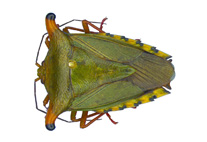Abstract
Setopagis maculosa (Todd, 1920) (Aves: Caprimulgidae) was described based on a single male specimen collected by Samuel Milton Klages in French Guiana, northeastern South America. Since then, no new specimens have been collected nor have any reliable records been made, and the validity of the species has been questioned. A detailed analysis of the holotype reveals that it has unique and distinctive morphological traits that support the validity and taxonomic status of the species, which is provisionally placed in Setopagis. We present new information on the type locality at the time of its collection, which may shed some light on the habitat preferences of the species, and we provide details on its plumage that have been largely overlooked and that will be important for future field identification.

